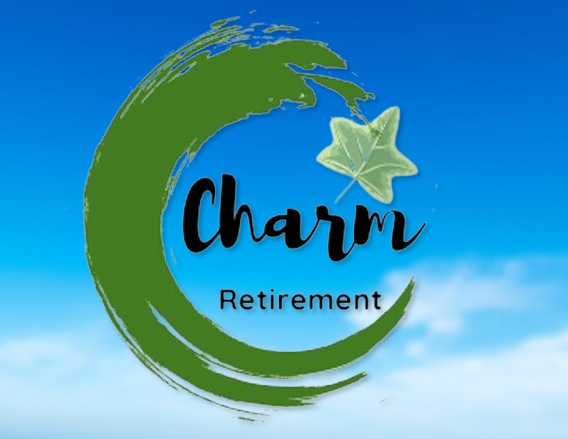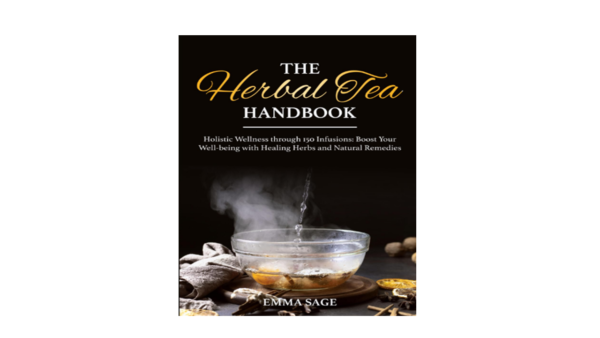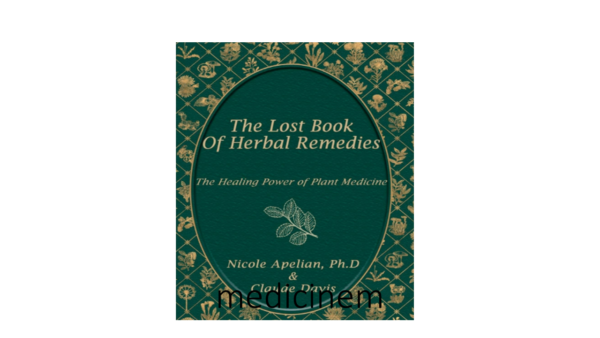Welcome to the world of alternative medicine.
Prince Charles is a staunch defender and millions of people swear by it; most UK doctors consider it to be little more than superstition and a waste of money. But how do you know which treatments really heal and which are potentially harmful?
Now at last you can find out, thanks to the formidable partnership of Professor Edzard Ernst and Simon Singh. Edzard Ernst is the world’s first professor of complementary medicine, based at Exeter University, where he has spent over a decade analysing meticulously the evidence for and against alternative therapies.He is supported in his findings by Simon Singh, the well-known and highly respected science writer of several international bestsellers.
Together they have written the definitive book on the subject. It is honest, impartial but hard-hitting, and provides a thorough examination and judgement of more than thirty of the most popular treatments, such as acupuncture, homeopathy, aromatherapy, reflexology, chiropractic and herbal medicine.In Trick or Treatment? the ultimate verdict on alternative medicine is delivered for the first time with clarity, scientific rigour and absolute authority.
Read more
Disclaimer Note : This post may contain affiliate links, meaning I get a commission if you decide to purchase through my links, at no cost to you.












oxgirl01 –
This book gave me some new insights into the alternative health industry – one which appears to be as guilty of dubious practices as the pharmaceutical industry. I was shocked to read the chapter on chiropractors and patients who have been killed by having their spine, particularly the vulnerable neck area, adjusted incorrectly. The chapter on homeopathy was also an eye opener. According to the authors, there is no scientific evidence to prove that it works any better than a placebo, despite the endorsement of the Prince of Wales and other famous people. I was already aware the field of nutrition can also be tainted by questionable ingredients such as aspartame and artificial fillers in vitamin supplements. In my experience, the alternative health field still has much to offer people, especially helping relieve stress and to aid relaxation than the pharmaceutical industry has to offer with drugs that have potentially dangerous side effects, questionable scientific proof that they actually work and masking the underlying cause of health problems, such as using mercury in amalgam fillings and vaccines. To find out more on this subject you can download on Amazon Kindle “My Journey Back to Health – How I survived mercury poisoning from amalgam fillings naturally without harmful drugs” by Alice Hill.
G. B. ROBINSON –
Simon Singh and Edzard Ernst have written a brilliantly lucid account. They describe clearly how modern medicine works, how evidence for and against treatments is gathered and subjected to the closest scrutiny before a medical or surgical intervention is licensed. They clearly show how different this is from the claims of most “alternative medicine” practitioners.
I would strongly advise anyone thinking of going to an “alternative” practitioner to read this book beforehand – it’s amazingly easy to read and there are quite a few witty asides which made me laugh out loud several times.
But especially, perhaps, I would hope that all those doctors who actively promote, or by implication encourage, “alternative” treatments that are unproved, or have been disproved, read this book; that misguided government agencies giving a stamp of approval to quackery read it and reconsider.
I ought to declare an interest as a retired general psychiatrist. My own profession has had more than its share in its time of dubious “treatments” so I’m particularly concerned that what is being sold to a vulnerable public should be tested to the most stringent standards. That’s what differentiates the modern practice of medicine from some two-and-a-half-thousand years of superstitious trial-and-error, most of which did patients more harm than good. But it’s also what differentiates it from most of what is dangerously euphemized as “alternative medicine”.
This is a most timely book. If people absorb its carefully reasoned arguments it will not only save them from wasting their money, it could end up quite literally saving their lives.
Cheerioh –
Si vous lisez l’anglais, tant mieux car vous pourrez lire cet ouvrage majeur sur la médecine alternative. J’avais lu une recommandation pour ce livre dans un autre ouvrage et il était d’occasion alors j’ai sauté dessus.
L’un des auteurs est un scientifique de haut niveau et l’autre est médecin et a pratiqué l’homépathie. Ils essayent de porter un regard scientifique et sérieux sur la médecine “alternative”. La lecture est assez passionnante parce que les auteurs font également le point en parallèle sur la médecine conventionnelle. On découvre en gros mais avec une démonstration très convaincante que la médecine n’est vraiment devenue ce qu’on appelle la médecine qu’en appliquant une certaine rigueur scientifique à ses fonctionnements. Et à partir de là le charlatanisme est devenu la médecine et ce qui reste de charlatanisme est devenu la “médecine alternative”.
Eh oui car le constat est assez effrayant sur l’efficacité des options qu’on nous suggère par rapport à la médecine.
Les auteurs n’étaient pas a priori contre la médecine alternative et l’un des auteurs l’enseigne même à l’université mais ils ont juste fait preuve de rigueur. Les arguments des uns et des autres sont repris et analysés, les dangers potentiels abordés.
Bref, je recommande cette lecture à toute personne qui aurait encore un doute car la conclusion est assez radicale.
M. Hillmann –
Simon Singh is the arch skeptic and now famous for his libel challenge to chiropracters that will reshape British libel laws. I did not expect him to give alternative medicine an easy ride. But Professor Edzard Ernst is the world’s first professor of complementary medicine and has practiced homeopathy and other alternative medicines. Surely he has intellectual capital invested in these treatments?
Well if he ever did he certainly does not now. The pair systematically and thoroughly review the evidence on the effects of acupuncture, homeopathy, chiropractic therapy and herbal medicine. They are blunt and outspoken and offer no apologies for presenting “the truth.”
They begin by discussing how science determines the truth. Evidence based medicine has revolutionised medical practices transforming it from an industry of charlatans and incompetents into a system of healthcare that can deliver such miracles as transplanting kidneys, removing cataracts, eradicating smallpox and saving millions of lives each year. This has been achieved by randomised double blinded clinical trials. If conventional medicine requires such objective assessment then so should alternative medicine.
As with all Simon Singh’s work, the scientific issues are brought to life by fascinating human stories, for example about George Washington dying at the hands of bloodletting doctors or about how Florence Nightingale managed to win a bitter argument against the medical establishment by arming herself with solid irrefutable evidence about the importance of hygiene. She was the first female member of the Royal Statistical Society in 1858 and was an honorary member of the American Statistical society.
Their skeptiscm of homeopathy and even chiropractice does not surprise me. But the lack of conclusive evidence supporting acupuncture even in its less controversial applications is surprising. Where there are high quality trials supporting the use of acupuncture for some types of pain and nausea, there are high quality trials that contradict it. In short the evidence is neither consistent nor convincing.
The Placebo Effect can be a very strong and positive influence in healthcare, but can alternative medical practictioners justify their existence by practicing placebo medicine and helping their patients with essentially fake medicine?
Of course plant extracts are used in the treatment of a whole range of diseases and the authors list the efficacy of a range of the more popular herbal medicines describing them as Good , Medium or Poor and then describing their risks. Unlike conventional pharmaceuticals , herbal remedies have not been properly tested or monitored for safety.
This book does not simply play to your prejudices but it leaves you feeling informed and awed by the depth and width of research on which it is based.
Rupinder Sayal –
“Alternative” Medicine – Homeopathy, Naturopathy (!), Ayurveda, Acupuncture, Acupressure, etc. are big business globally as well as in India. But do these treatments stand the tests of Science? The writers – Edzard Ernst and Simon Singh, review the published scientific evidence for and against a whole gamut of alternative therapies and summarise their findings in this brilliant book. Along the way, they also clarify what “evidence” means, the confounding “placebo effect”, and what counts as an “effective” therapy. You will know a hell lot more about what works and what doesn’t for these alternative therapies, and also get to know the weird, outlandish theories behind the workings of these practices. I can’t recommend it enough.
Laurence D. Duncan –
Ever wondered whether any of the wacko medicines/supplements/treatments that are offered these days have any worth at all? This is the book for you.
RJT –
un libro imprescindible para poner en su sitio las distintas medicinas alternativas. Una cosa es el conocimiento cientifico y otra muy distinta la Fe, y su potente eficacia para curar, pero también para engañar y sacar dinero a incautos, privandoles de terapias a menudo necesarias
Marcelo –
Essa é uma obra extraordinária que lança luz sobre o mundo complexo (e muitas vezes nebuloso) da medicina alternativa. Este livro é uma fonte inestimável de conhecimento para qualquer pessoa interessada na área da saúde e na ciência.
A obra aborda com coragem e clareza a prevalência de terapias não comprovadas e muitas vezes ineficazes que permeiam a indústria da medicina alternativa. Os autores desmantelam mitos e mostram, com base em evidências científicas sólidas, o que realmente funciona e o que não passa de ilusão. E o melhor: isso é feito de maneira acessível, sem jargões técnicos, tornando o livro acessível ao público leigo.
O livro também destaca a importância de uma abordagem baseada em evidências na medicina, incentivando os leitores a questionar terapias e tratamentos que carecem de apoio científico. A mensagem central é clara: nossa saúde e bem-estar merecem abordagens baseadas em evidências, e este livro oferece as ferramentas necessárias para discernir entre tratamentos eficazes e placebos.
A leitura é extremamente agradável. Aliás, esse é um dos meus livros favoritos. Já tinha a versão em Português, mas não pude deixar de aproveitar a oportunidade de adquiri-lo também na versão em Inglês. Paguei inacreditáveis R$ 3,95 (menos de 1 dólar) na promoção de 10 de outubro de 2023!